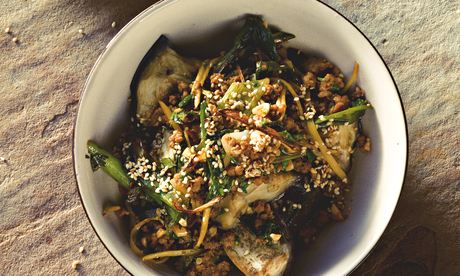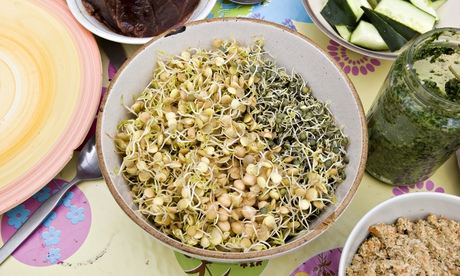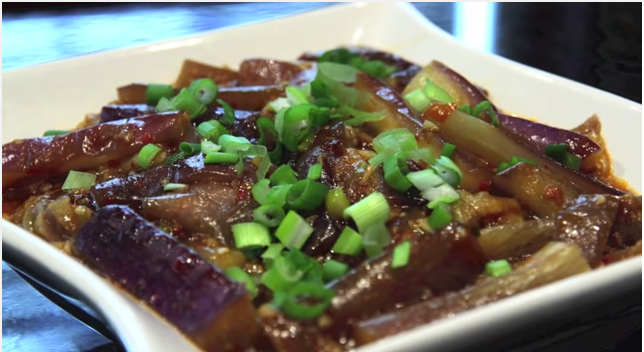Globally, we eat more pork than any other meat. We also eat pretty much the entire pig, save for its eyes and squeal: back legs are turned into hams, necks are diced for stews, sides are cured for bacon, shoulders are jointed for roasting, stomach fat is rendered down to lard, ears are crumbed and fried, bellies are roasted, skin is crackled, cheeks and trotters are braised… Nothing goes to waste.
The regulations on what pigs themselves are allowed to be fed, however, are bafflingly inefficient and uneconomical. As Thomasina Miers explained in this magazine last month, the Pig Idea campaign wants the law to allow food waste (or swill) to be fed to our pigs, as it was before 2001, when the practice was banned due to foot and mouth disease outbreak. The horrors of such outbreaks cannot be underestimated, but preventative heat-treatment measures on food waste would effectively eliminate the spread of such pathogens again. The reasons for doing so are economical, environmental and nutritional: farmers spend huge amounts feeding animals cereals and soy-based crops (whose growth is forcing the clearing of the forests in the Amazon basin), while the food industry spends vast sums diverting its waste. It makes no sense at all.
Pork with ginger, spring onion and steamed aubergine
Serve with plain rice or noodles. Serves four.
60g raw peanuts
3 medium aubergines, cut into 3cm dice
Salt
60ml groundnut oil
2 bunches spring onions, trimmed and chopped on the diagonal into 3cm slices
60g peeled ginger, julienned
4 cloves garlic, peeled and thinly sliced
1 green chilli, finely sliced
500g pork mince
4 tbsp mirin
2 tbsp dark soy sauce
2 tbsp kecap manis
2 tsp sesame oil
2 tbsp rice vinegar
10g coriander, roughly chopped
1 tbsp sesame seeds, toasted
Heat the oven to 140C/285F/gas mark 1. Spread the peanuts on a small baking tray and roast for 30 minutes, until golden brown. Remove, set aside and, once cool, chop roughly.
Put the aubergines in a large bowl with two teaspoons of salt. Mix well, then tip into a colander over the bowl and leave for two hours. Shake the colander to remove any excess liquid, pat the aubergine dry in a tea towel and return to the colander.
Take a large saucepan for which you have a lid and fill with enough water to come 3cm up the sides. Bring to a boil, then place the colander in the pan, making sure the aubergine is not touching the water. Put the pan lid on the colander and cover with foil, to prevent the steam escaping. Lower the temperature to medium-high, steam for 10 minutes, then lift out the colander and set it aside somewhere warm.
While the aubergines are steaming, pour half the groundnut oil into a large sauté pan and put on a high heat. Add the spring onion, ginger, garlic and chilli, and fry for four minutes, stirring often, until the garlic starts to colour. Tip into a small bowl and set aside.
Pour the remaining oil into the pan and add the pork mince. Fry for three minutes, stirring to break up the meat. Add the mirin, soy, kecap manis, sesame oil, rice vinegar and half a teaspoon of salt, cook for two minutes, then tip the spring onion and garlic mixture back into the pan. Cook for a minute more, then remove from the heat – there should be plenty of liquid in the pan – and stir through the coriander and peanuts.
Divide the warm aubergine between four shallow bowls, top with the pork mixture, sprinkle with the sesame seeds and serve.
Char-grilled pork loin with parsnip and roasted garlic
The best sort of tamarind paste is the one you make yourself by soaking a block of seeds, but ready-made paste is widely available. Different brands vary greatly in sharpness, so try it before you add it, to gauge whether you need a little more or a little less than stipulated. Serves six.
1½ tbsp tamarind paste
15g mint leaves, roughly chopped
30g parsley leaves, roughly chopped
30g coriander leaves, roughly chopped
3 tbsp white wine
1 tsp ground cumin
2 tbsp muscovado sugar
1 large garlic clove, peeled and crushed
Juice of 1 lime
90ml olive oil
Salt and black pepper
2-3 pork tenderloins (800g total)
3 whole garlic heads
6 medium parsnips, peeled and cut into 8cm x 2cm batons, woody centres discarded
Put the first nine ingredients in a food processor with two-thirds of the oil, three-quarters of a teaspoon of salt and a good grind of pepper, and blitz until smooth. Tip a quarter of this mix into a large bowl, add the pork, rub the marinade all over and refrigerate for at least three hours. Cover the remaining marinade and keep at room temperature.
Heat the oven to 200C/390F/gas mark 6. Slice 1cm off the top of each garlic head to reveal the cloves, and lay the heads cut side up on separate squares of foil. Sprinkle over a pinch of salt and a tablespoon of oil. Seal the foil, place the garlic parcels on a baking tray and roast for about 45 minutes, until soft and caramelised.
Simmer the parsnips in boiling water for six to eight minutes, until cooked. Drain, refresh, dry and put in a bowl with half a teaspoon of salt and the remaining tablespoon of oil.
Put a large griddle pan on a high heat and ventilate your kitchen well. Scrape the marinade off the tenderloins and reserve. Sprinkle the meat with a quarter-teaspoon of salt, then griddle the loins for about five minutes in total, turning regularly. Transfer to a medium baking tray and pour over the scraped-off marinade. Roast for eight to 10 minutes, until cooked medium-well, then set aside somewhere warm.
With the griddle pan still on a high heat, char the parsnips for three minutes, turning halfway through, then transfer to a bowl. Squeeze the garlic cloves from their skins on to the parsnips, stir to combine and divide between four plates. Cut the pork into 1.5cm-thick medallions and serve alongside, spooning the reserved marinade on top.
Pork and bean stew
 Yotam Ottolenghi’s pork with ginger, spring onion and steamed aubergine. Photograph: Colin Campbell for the Guardian. Food styling: Claire PtakIf you don’t have time to soak the beans, use tinned instead and simmer for only five minutes before adding the pork and carrots. Serves six.
Yotam Ottolenghi’s pork with ginger, spring onion and steamed aubergine. Photograph: Colin Campbell for the Guardian. Food styling: Claire PtakIf you don’t have time to soak the beans, use tinned instead and simmer for only five minutes before adding the pork and carrots. Serves six.
900g boneless pork shoulder, rolled and tied
Salt and freshly ground black pepper
75ml olive oil
1 small head garlic, cloves separated
6 sprigs rosemary
2 medium onions, roughly chopped
400g smoked bacon rashers, cut into 1cm dice
2 tsp ground cumin
1 tbsp sweet paprika
¼ tsp smoked paprika
300g dried cannellini beans, soaked in water overnight and drained
5 bay leaves
500ml chicken stock
3 medium carrots, peeled and cut into 1cm dice
20g parsley, chopped
For the herb paste
10g mint leaves
10g tarragon leaves
1 medium garlic clove, peeled and crushed
1 green chilli, stalk removed and roughly chopped
Finely grated zest of ½ orange
Heat the oven to 140C/285F/gas mark 1. Put the pork in a bowl and add three-quarters of a teaspoon of salt and some pepper. Pour over two tablespoons of oil and rub in. Push the garlic and two rosemary sprigs into the centre of the pork, and lay it in a high-sided oven tray. Cover with foil and roast for five hours, until falling apart. When cool enough to handle, discard any liquid and the string, and shred into 3-4cm pieces.
Put all the ingredients for the herb paste in the small bowl of a food processor and blitz to a rough paste.
Pour the remaining oil into a large, heavy-based pot and place on a high heat. Add the onions and bacon, and fry for 10 minutes, stirring often, until the onions have softened. Turn the heat to medium, add the spices, and cook, stirring, for 30 seconds. Add the beans, remaining rosemary, bay, stock, a litre of water, a quarter-teaspoon of salt and some black pepper. Bring to a boil, cover and simmer for 10 minutes. Remove the lid and simmer for 30 minutes, until the beans are almost cooked (they may take longer – anything up to an hour). Add the pork and carrot, and simmer uncovered for 30 minutes, until the sauce has thickened and the carrots and beans are soft. Remove the rosemary and bay, stir in the herb paste and parsley, and serve.
• Yotam Ottolenghi is chef/patron of Ottolenghi and Nopi in London.



 From left: dang gui (angelica sinesis), codonopsis, garlic, white pepeprcorns, onion
From left: dang gui (angelica sinesis), codonopsis, garlic, white pepeprcorns, onion Goji berries, liquorice bark, star anise, ligusticum
Goji berries, liquorice bark, star anise, ligusticum

 Tang oh
Tang oh





 Ready in 25 minutes
Ready in 25 minutes